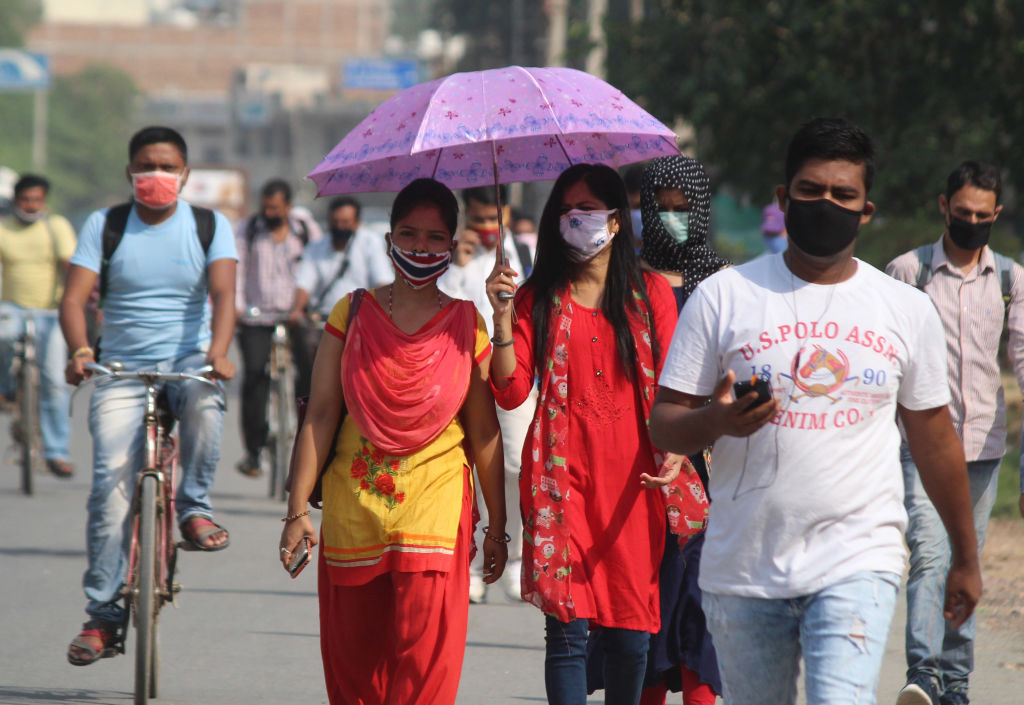
By Friday, 4 July, Delhi had suffered four consecutive days of a heat wave. Temperatures in some pockets of the city crossed 45 degrees yet no advisories were issued by the government. The only information that made it out was that the heat wave-like conditions are very likely to continue till 11 as per the Indian meteorological department (IMD).
Due to the dry westerly/southwesterly winds from Pakistan to northwest India at lower levels, heat wave conditions in isolated/some pockets over Punjab, Haryana, Chandigarh and Delhi, north Rajasthan, Uttar Pradesh and northwest Madhya Pradesh (are likely) during next two days,” the weather department said.
IMD in earlier bulletins has said that southwest monsoon is unlikely to hit till 7 july, “Model forecasts show that easterly winds from Bay of Bengal in lower tropospheric levels are not likely to be established over north-western plains of India before July 7.” But that delay in monsoon caused the temperature to rise in the capital city for one more week.
The National disaster management Authority defines a heat wave as when the normal temperature of a station is 40°C and a departure of 5°C to 6°C is considered a heat wave and when normal temperature is less than 40°C departure of 4°C to 5°C is heat wave. Above 45°C is a heat wave irrespective of normal temperature.
Globally heat waves are considered by scientists as a silent killer, as temperatures are soaring up in various cities even in Europe and America — the frequency of hot summer days are also rising. However, heat waves pose the most threat to developing countries. According to a report in the Lancet, a medical journal, in 2018 around 300,000 people above the age of 65 died as a result of extreme heat, mainly in India and China.
Delhi has an action plan to respond to heat waves. It’s own state action plan for climate change released in 2019 clearly talks about heat waves — how the frequency of heat wave days has increased over the years. Despite this, so far no heat wave warning has been issued by the government. A color coded system — yellow for hot days, orange for heat waves, and red for extreme heat waves is also planned. Unlike air pollution, heat waves seem to create less buzz.
According to a report in the TOI , the Delhi pollution control board (DPCC), a body to issue alerts, is preparing a new plan based on the data collected from last decade, which is likely to be released in the next three months.
There were 54 heatwaves in India between 1961 and 2005. A recent study by Indian Institute of Tropical Meteorology (IITM) said that the frequency of heatwaves is likely to increase after 2020 — the number would go up to 138 between 2020 and 2064.
Heat waves cause dehydration, heat cramps, heat exhaustion and heat stroke. Heat exhaustion can result in fatigue, weakness, dizziness, headaches, nausea, vomiting, muscle cramps and sweating. As per government records, heat waves between 2011 and 2018 killed about 6,187 people in India. But the actual number of deaths due to heat waves may be higher.
Victims of heat waves mostly belong to the marginalised communities, who live in an informal set-up with no access to ACs and coolers — and are forced to work in severe heat, risking their life.
Ramanath Jha, a distinguished fellow at Observer Research Foundation, writes that “Cities are more vulnerable to heat waves due to the ‘heat island effect’”
Urban spaces generate more heat. “Buildings, roads and other infrastructure absorb and re-emit the sun’s heat more than natural landscapes such as forests and water bodies. Urban areas, where such structures are highly concentrated and greenery is limited, become ‘islands’ of higher temperatures in comparison to outlying areas. Consequently, temperatures in urban areas are about 1°F-7°F higher in the daytime and about 2°F-5°F higher in the nighttime than temperatures in outlying areas.”
Heat waves are a global phenomenon linked to climate change. Despite that heat wave is not part of Disaster management act 2005. But after the Sendai Framework for Disaster Risk Reduction, in the wake of 2015 National Disaster Management Authority (NDMA) published guidelines to prevent and manage heat waves. NDMA asks cities and states to prepare their separate action plans. But so far state governments including Delhi have not been taking heat waves seriously.
Delhi Police raided a late-night illegal bar in Samaypur Badli, detaining 25 people and seizing…
A rear-end crash near Delhi Haat triggered a blaze that gutted both vehicles, though no…
Court grants probe agency more time as NIA pursues wider links in Red Fort blast…
Featuring works in thread, fabric, performance and digital media, Ski(e)n examines the body as a…
Govt report shows gains in maternal health, with better care access and fewer anaemia cases…
Delhi driver murdered after petty dispute; birthday celebration turns violent, say police